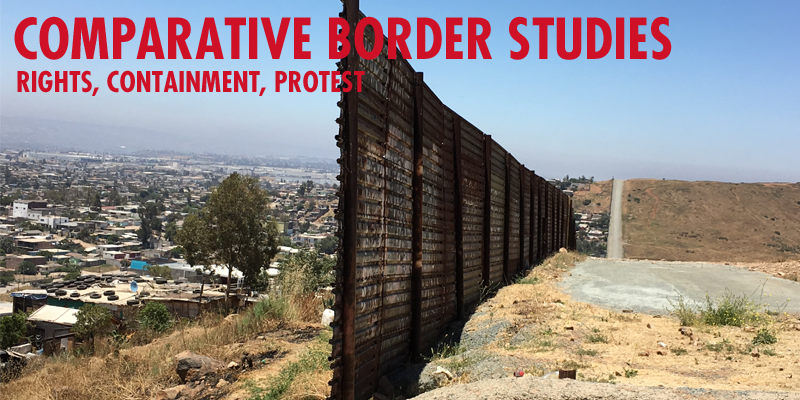Violent Borders, Carceral Seas Info
Panelists:
Reece Jones
“Violent Borders: Refugees and the Right to Move”
Over 7500 people died attempting to cross a border in 2016. This presentation argues that the violent restrictions on the movement of the poor today are not new or unique, but rather are part of long history of protecting privilege through legal restrictions on the movement of the poor backed up by violence.
Laleh Khalili
“Carceral Seas”
In this presentation, I consider the militarisation of the seas and carceral practices at sea. Though brigs have long been a feature of state carceral practices, I will focus on two other modes of carcerality at sea whose relationship to states and entrepreneurs of violence are more indeterminate: these are ghost ships –unseaworthy ships–transporting migrants across the Mediterranean, and ships and seafarers captured by pirates in the Gulf of Aden and Indian Ocean. These modalities of carcerality reveal the grey zone of parastatal operations, and the fractures and fissures in international laws regulating, and heavy securitisation of, migration and trade.
Terry Park
“Please Believe Us With All Your Heart”: The Nonpatriated Asian Prisoner of the Korean War, the Korean Demilitarized Zone, and US Liberal Empire, 1947-1953″
My talk focuses on the production and representation of the nonpatriated Asian POW through his “voluntary” emancipation in the “neutral” space of the Korean DMZ. I examine the US’s adoption of “inspired defection” as Cold War policy and the emergence of a new legal, cultural, and political figure—the “escapee”— a predecessor of the Korean War figure of the nonpatriated Asian POW. The sentimentalizing construction of this figure triggered a shift in the US imagination that branded the Cold War as a humanitarian, cosmopolitan project, which involved partnerships with non-aligned nations like India. I interrogate the camouflaging labor performed by the words “neutral” and “demilitarization” and the ways in which US Cold War empire neutralized and realigned perceived threats through pedagogical campaigns and non-aligned entities. This grammar of the Korean DMZ, which cohered around the incarcerated figure of the nonpatriated Asian POW, helped engineer the emergence of US liberal empire from the barbed-wire, dissected belly of Cold War Asia.
